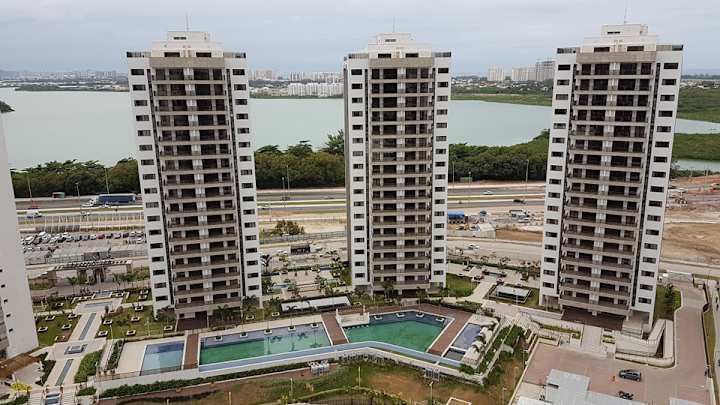Olympic Village: Inside look at where the athletes will live during Rio Games

Your teams. Your favorite writers. Wherever you want them. Personalize SI with our new App. Install on iOS or Android.
It will take 135,000 chairs, 18,000 bed spaces and 3,500 apartments to house athletes in the Olympic Village in Rio de Janeiro. And Paul Ramler, CEO of RGS Events had a hand in designing them all, like he has in pretty much every Olympics since Sydney in 2000.
“In Brazil, rooms were smaller so we didn’t have the same capacity to assemble product in warehouses,” he tells SI.com. “We came up with a design of the bed to assemble the bed in the room.” Same for the wardrobes. The beds come as a metal frame that unfolds, while the unassembled wardrobes arrive in the room plastic-framed with fabric allowing for easy installation inside the village apartments.
Where RGS Events took an artful turn was with the glass coffee tables colored with iconic scenes of Brazil. All the artwork inside the village features well-known Brazilian pictures. “Everything is green in this country,” Ramler says. “Whenever possible we want to tie in the color of our products to the look and feel of the games.”
The 3,500 apartments include temporary walls to house more athletes than needed for a typical apartment space post-games. The space also comes with lounges and three extra villages for media and officials.
Ramler says each time they handle a different international event—whether a World Cup or an Olympics—they must deal with the unique challenges of that country’s infrastructure and politics. In London, for example, mattresses were all made in the United Kingdom because of the strong local mattress market and all the London rooms were outfitted in timber. For Brazil, the artwork and interiors feature a heavy green theme; even the glass coffee tables depict the footpaths of the famed Copacabana beach.
As for the products, RSG Events must provide a set number of seats, whether chairs, sofas or bean bags, and they’ve found a few other items the athletes crave, such as multi-utility plugs, ample charging points, lockable facilities (a safe of some sort) and black-out curtains so athletes can sleep anytime during the day or night.
“We are trying to identify needs,” Ramler says. “This is not a five-star hotel room, but the athletes need to be as comfortable as possible.”
While Ramler’s team needs to only plan for a three-week lifespan of the interiors, the products are all commercial grade, meant to last 10–15 years. “You can’t have Usain Bolt falling off a chair and breaking his leg,” Ramler says. “We are very mindful of the fact we can’t afford any product failures.”
After the games, the beds, chairs, tables and more will live on. RGS Events has teamed with San Francisco-based B-stock Solutions to launch an online auction for the bidding on all 1.3 million apartment furnishings, allowing RGS to fold those beds back up and ship them across the world. In each case, whether a chair or a glass coffee table, expect the color of Brazil to live on.
Tim Newcomb covers sports aesthetics—stadiums to sneakers—and training for Sports Illustrated. Follow him on Twitter at @tdnewcomb.

Based in the Pacific Northwest, Tim Newcomb covers stadiums, sneakers, design, training and technology across all sports.